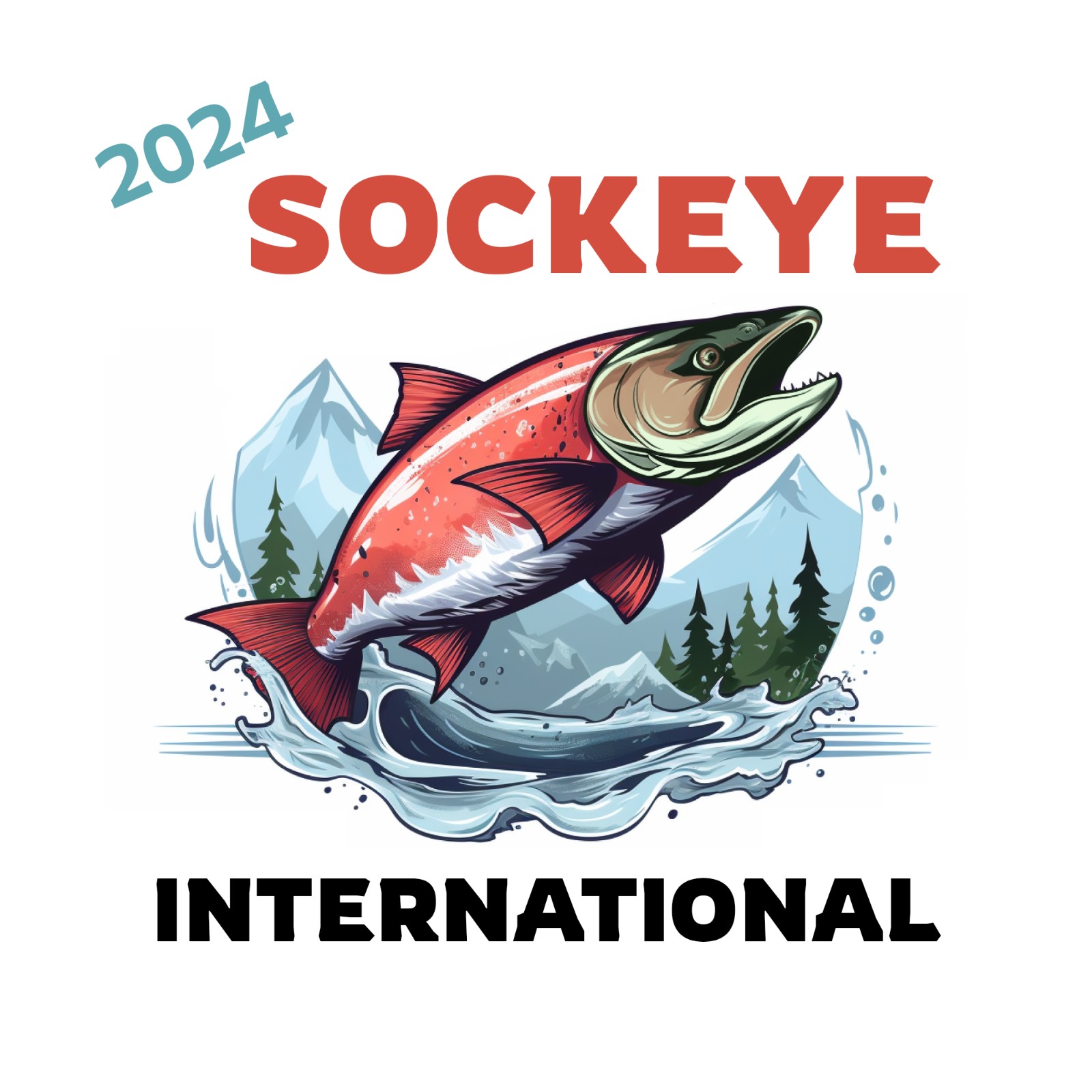
2024 Sockeye International
Predictions
Ugashik River's Sockeye run
5,875,000
Quesnel's Sockeye run
35,000
Kvichak River's Sockeye run
8,786,000
Stellako's Sockeye run
97,000
Egegik River's Sockeye run
9,212,000
Raft River's Sockeye run
13,000
Igushik River's Sockeye run
1,126,000
Naknek River's Sockeye run
6,087,000
Wood River's Sockeye run
8,354,000
Chilko River's Sockeye run
556,000
All of Columbia River's Sockeye run
69,000
Nushagak River's Sockeye run
3,579,000
Alagnak River's Sockeye run
4,056,000
Stuart River's Late Sockeye run
48,000 Prediction method
Submitted on Jun 28, 2024
CMISST (pronounced sea mist)
Abstract
Salmon populations face numerous challenges during their migration from freshwater rivers to the open ocean, making accurate assessment of their survival critical for effective conservation and management strategies. Sea surface temperature (SST) and sea level height (SLH) have often been used in correlative models to estimate marine survival. This often takes the form of standard indices, such as the Pacific Decadal Oscillation or the North Pacific Gyre Oscillation, or time series of SST or SLH at a specific location, such as near the mouth of the river from which salmon are migrating. However, from satellite data and earth systems models, we now have rich data sets with complete spatial and temporal coverage to use for these applications. Here, we introduce a novel method for extracting information from these data sets to inform salmon survival modeling efforts. Specifically, we create a spatial map of covariance values between salmon and SST or SLH and calculate a temporal index of SST or SLH similarity to that map. The resulting index, referred to as Covariance Map Index of Sea Surface Temperature (CMISST) can be used in subsequent predictive models of salmon survival or adult return abundance. Importantly, and unlike standard indices such as PDO, this new metric is tailored for the specific stock of salmon in which one is interested. As a result, this new approach can be applied to other marine species, such as rockfish, squid, and sablefish. By employing this innovative tool, researchers, policymakers, and conservationists can gain deeper insights into marine survival patterns, enabling more informed and effective strategies for the sustainable management of these iconic species.
Supporting Documents
No documents submitted
Prediction Model
Submitted on Jun 28, 2024
Description
Steps taken:
1. Crate a covariance map (calculate covariance between SST and sockeye returns for each grid cell in the North Pacific), plot values on a map. This map can be thought of as the optimal spatial pattern for SST anomalies.
2. Create CMISST index (regress spatially explicit spring SST data onto the Covariance Map to create an index of similarity to the spatial patterns in the Covariance Map - how similar is each year to the map).
3. Use a simple linear regression with log link to model salmon returns using the CMISST index as the sole covariate. Obviously, this can be used in a more complicated model, or with additional covariates, but I'm keeping it simple for this fun exercise.
Data:
Because I wanted all salmon to align with the year of ocean entry (the year when SST would most likely be related to their survival), I used the number of salmon returning to a river from all individuals that went to sea during a given year (marine entry year). I fit the model through outmigration year 2019, which means I ignored the small number of 5-ocean fish returning to each river. The forecasts are for returns from outmigration year 2020 (includes 1-ocean through 4-ocean fish entering the ocean that year).
Sea Surface Temperature data were obtained from the Extended Reconstructed Sea Surface Temperature (ERSST) version 5 dataset (Huang et al, 2017). NOAA Extended Reconstructed SST V5 data were provided by the NOAA Physical Science Laboratory (PSL), Boulder, Colorado, USA, from their website at https://psl.noaa.gov.
Plots of model results can be found here (you will most likely have to ask for permission, which I will gladly grant): https://drive.google.com/file/d/1U7qQid-mhc1Q86H80Jjg7NHW0YlD-aJx/view?usp=sharing
